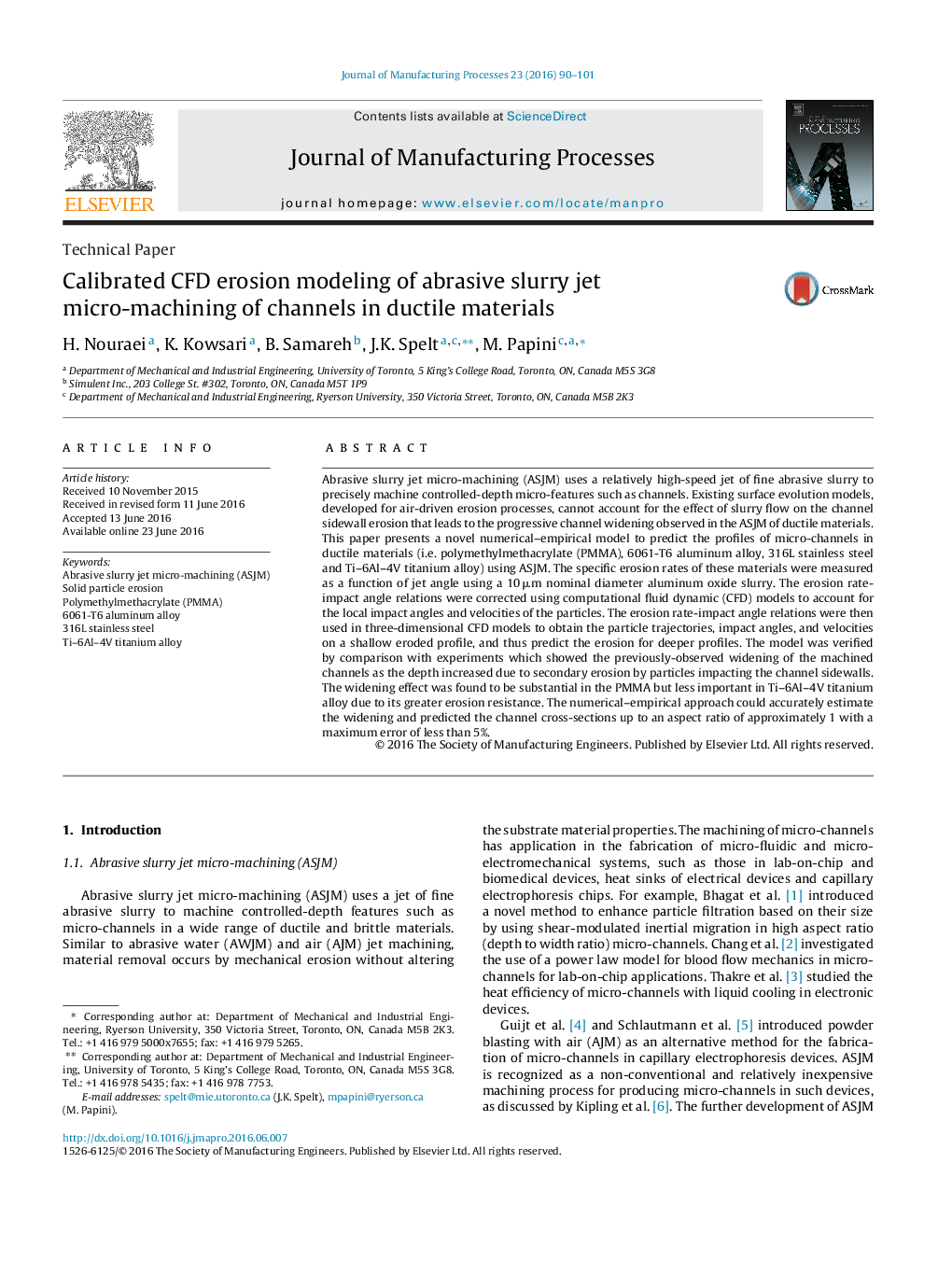| Article ID | Journal | Published Year | Pages | File Type |
|---|---|---|---|---|
| 1696848 | Journal of Manufacturing Processes | 2016 | 12 Pages |
•Fabrication of micro-channels in ductile materials using abrasive slurry jet.•Modeling of the slurry jet erosive efficacy distribution using 3D CFD models.•Accurate prediction of the channel widening and profiles with a novel model.
Abrasive slurry jet micro-machining (ASJM) uses a relatively high-speed jet of fine abrasive slurry to precisely machine controlled-depth micro-features such as channels. Existing surface evolution models, developed for air-driven erosion processes, cannot account for the effect of slurry flow on the channel sidewall erosion that leads to the progressive channel widening observed in the ASJM of ductile materials. This paper presents a novel numerical–empirical model to predict the profiles of micro-channels in ductile materials (i.e. polymethylmethacrylate (PMMA), 6061-T6 aluminum alloy, 316L stainless steel and Ti–6Al–4V titanium alloy) using ASJM. The specific erosion rates of these materials were measured as a function of jet angle using a 10 μm nominal diameter aluminum oxide slurry. The erosion rate-impact angle relations were corrected using computational fluid dynamic (CFD) models to account for the local impact angles and velocities of the particles. The erosion rate-impact angle relations were then used in three-dimensional CFD models to obtain the particle trajectories, impact angles, and velocities on a shallow eroded profile, and thus predict the erosion for deeper profiles. The model was verified by comparison with experiments which showed the previously-observed widening of the machined channels as the depth increased due to secondary erosion by particles impacting the channel sidewalls. The widening effect was found to be substantial in the PMMA but less important in Ti–6Al–4V titanium alloy due to its greater erosion resistance. The numerical–empirical approach could accurately estimate the widening and predicted the channel cross-sections up to an aspect ratio of approximately 1 with a maximum error of less than 5%.
Graphical abstractFigure optionsDownload full-size imageDownload as PowerPoint slide
